The Ultimate Wade Fishing Pre-Trip Planning Guide
- By: David Ulgenalp
- on
- Found In: Fishing Tips, Inshore Fishing, Wade Fishing, Weekly Newsletter: 1-9-22
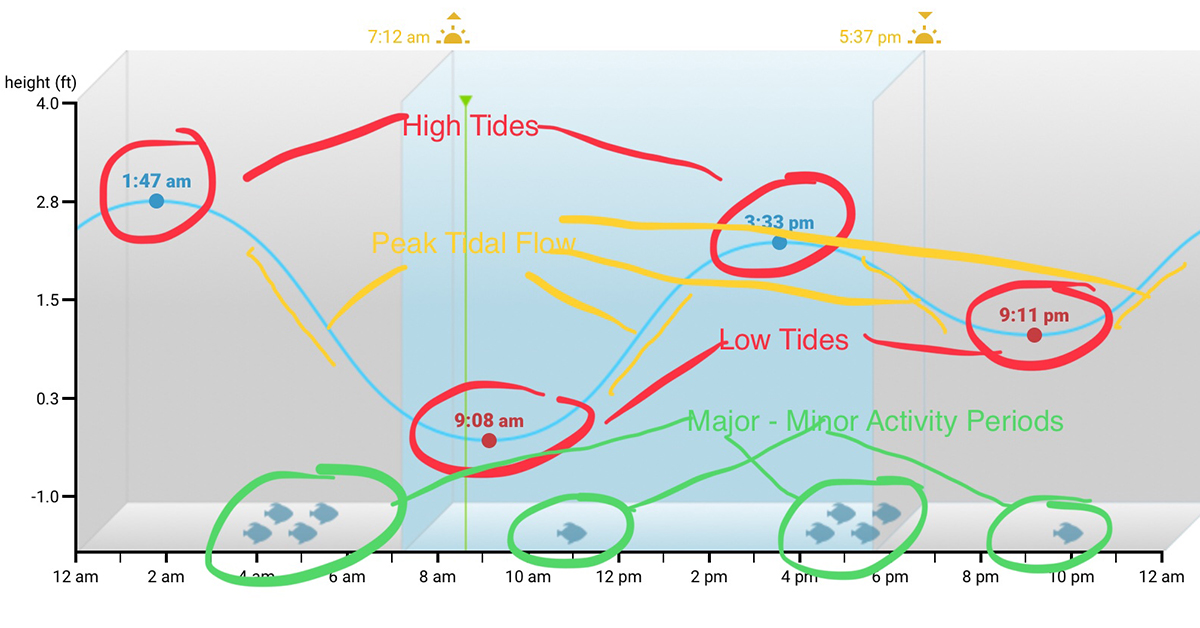
Wader Dave is back with some amazing wade fishing tips!
If you don’t know Wader Dave, he is one of our Salt Strong “Insider” club members who goes wade fishing 200+ days per year (he also does private wade fishing trips – (learn more about booking a private trip with Wader Dave here).
Wader Dave is probably one of the most consistent wade fishermen that I’ve ever met (catching inshore fish anywhere from Texas to Florida to Cape Cod – the three areas he fishes every year).
He’s so good that we filmed an entire Wade Fishing Mastery Course with him that had some epic reviews and testimonials.
We also did a blog post called, “Wade Fishing 101” that had a TON of comments and amazing feedback (you can see that post here).
So after many requests from our audience, we asked him to come back as a guest writer to discuss how he does his pre-trip planning for wade fishing.
Enjoy!
Wade Fishing Pre-Trip Planning
By Wader Dave Ulgenalp
Like a lot of the Salt Strong Insider Community, I love to fish in new areas and challenge my ability to find fish anywhere, anytime, and under any conditions.
I recently faced such a challenge as I took a spur-of-the-moment wade fishing trip to Corpus Christi, Texas with my son Alex.
I’ve waded nearby areas and know-how fabulous the fishing can be for big trout, reds, and flounder, but always with guides and spots that required a boat to get to them.
This trip would be unguided and with nothing other than a rental car and our feet to get us to the spots we were going to fish.
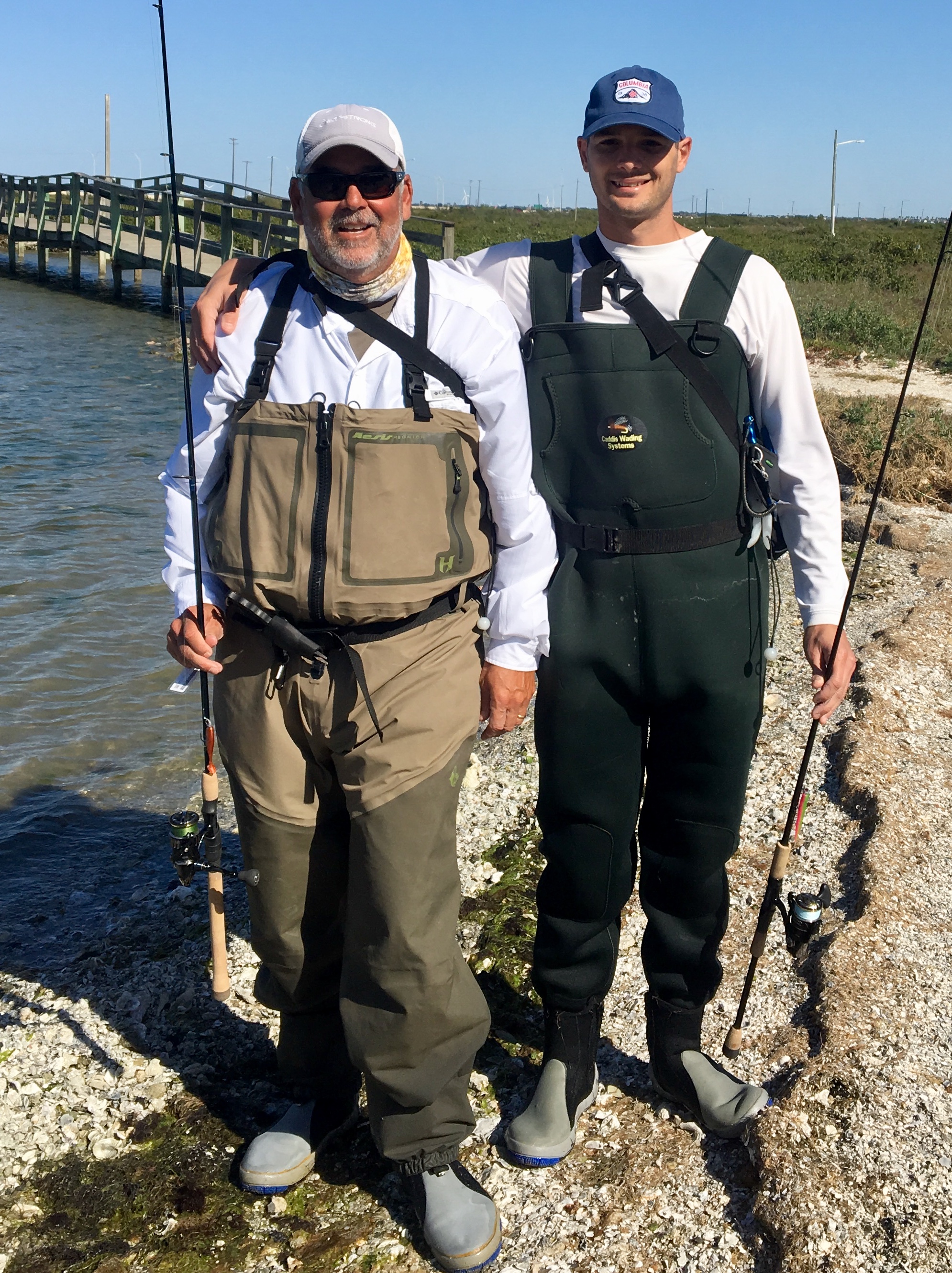
The process and tools I used, combined with my knowledge of how different fish species tend to behave under various conditions, allowed me to develop the strategy and tactics that resulted in a very successful fishing trip (which I’ll be sharing with you below).
And note that these exact same processes and tools that I’m about to share, are the same that I use when determining where, when and how I plan to fish when guiding a client or fishing by myself at home and most importantly, have helped make me the best fisherman I can be.
I guarantee that if you follow these steps and use these tools, your chances of catching fish in new areas as well as those you frequently fish, will improve dramatically.
Wade Fishing Pre-Trip Plan Step 1 – Weather
I don’t start any trip without looking at the weather. And I’m not just talking about rain or lightning…
It’s particularly important to know the likely wind speed and direction, air temperature, and chances for significant changes in and/or inclement weather.
The wind will tell you exactly what kind of areas you will need to fish.
Repeat, the WIND will tell you exactly what areas to fish (this is something that I overlooked for many. years).
For instance, if I knew I was going to fish a causeway (that was fishable on both sides), I would make the decision to fish on a certain side based on the wind.
Be sure to monitor hourly forecasts as you get within 48 hours of your trip.
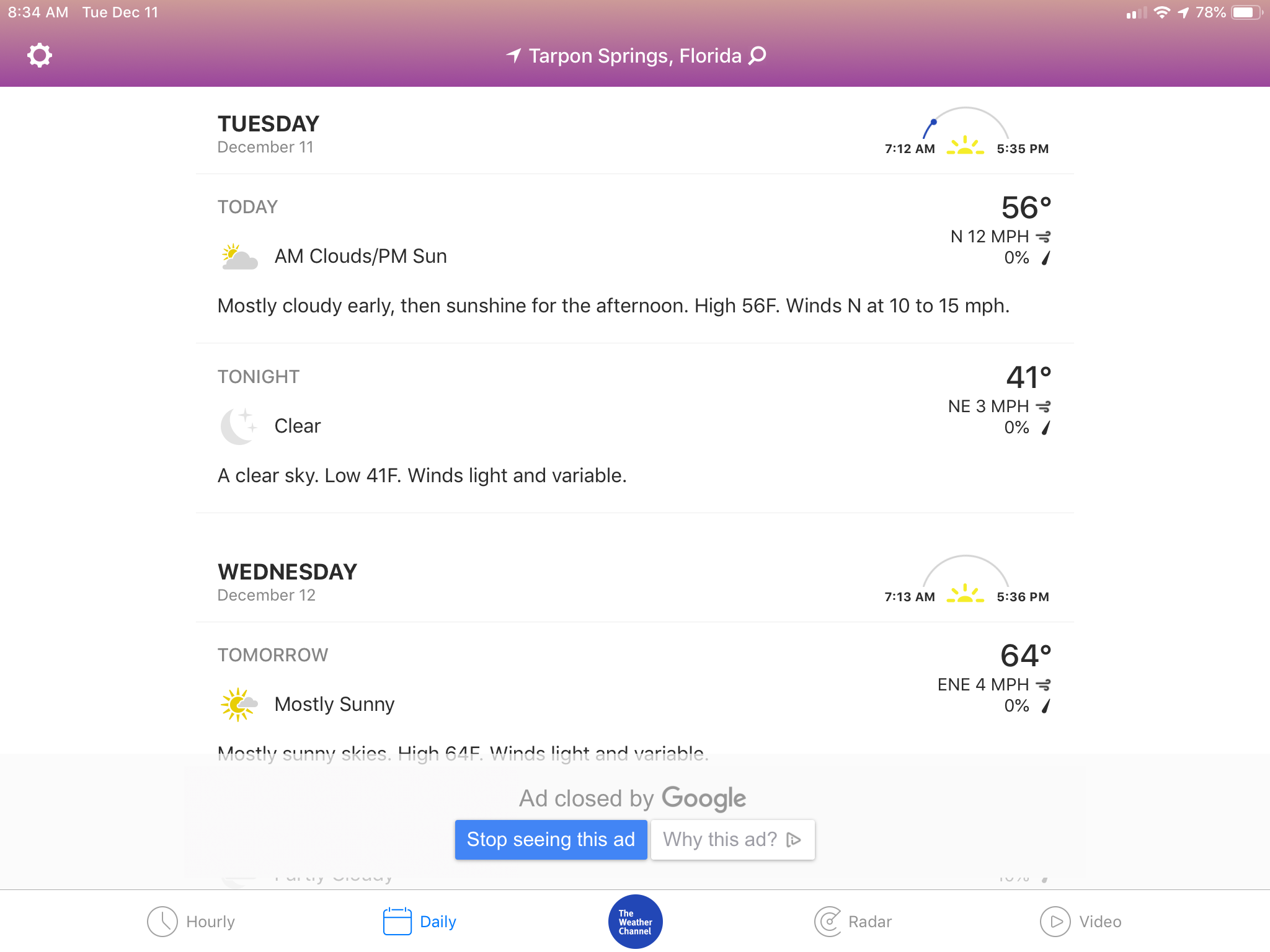

Get the weather forecast for the area and dates you will be fishing using The Weather Channel or another reliable weather app like the Salt Strong “Smart Fishing Tides” which shows the tides in conjunction with wind, wind direction, and the best time to fish.
You can find Smart Fishing Tides here.
Wade Fishing Pre-Trip Plan Step 2 – Tides
Next step is looking at the tides.
I like using Smart Fishing Tides because it has everything I need all in one place.
If you don’t have access to Smart Fishing Tides, then join the Salt Strong Insider Club and get unlimited access now.
But a good second option is tides4fishing.com, search for the tide station nearest to where you are planning to fish.
It will look something like this:

Review the tide chart for the area you will be fishing to determine whether you’ll be fishing incoming or outgoing tides, the strength of the tides and when tidal flow will be strongest.
There may be spots that are only wadable during extreme low tides or structure that is under water only around extreme high tides.
The few days before and after the full and new moons offer the strongest tides of the month (and are often preferable).


Review the Solunar and Activity Tables to determine daily Major and Minor periods of activity as well as days that are likely to be most active throughout any given month.
These tables are based upon the position of the moon as it orbits the earth daily as well as the phase of the moon during the 28-day cycle from new to full.
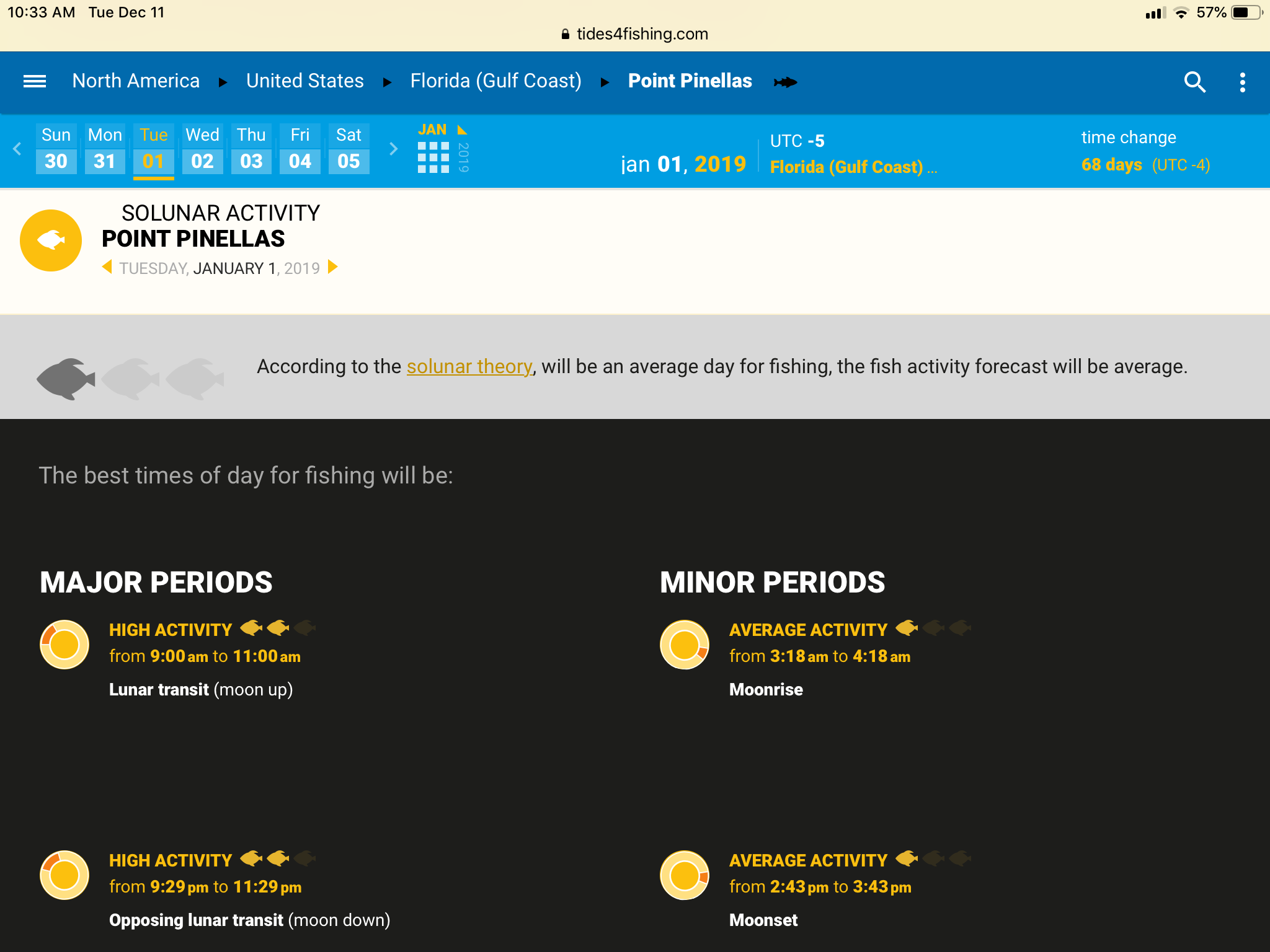
Monitor water temperature from day to day and evaluate changes likely to occur due to expected weather conditions.

*In addition to the information above, tides4fishing.com provides current weather conditions, sunrise and sunset, barometric pressure, UV Index, wave direction/height/period, wind speed/direction forecasts, and tidal coefficient.
It also offers a monthly chart that is great for identifying days and time with the highest potential for catching fish.
The same information in a slightly different format is available in their app Nautide for $13.99 for the 2019 data pack.
Wade Fishing Pre-Trip Plan Step 3 – Trends
Review current and past fishing reports (preferably from the same time of year as your trip) for information regarding the species of fish being caught, specific spots they’re being caught, weather conditions, favorite lures, and effective techniques.
Start with the Salt Strong Regional Reports, it’s an amazing resource with thousands of anglers who support one another with tips and tactics along with their real-time reports.
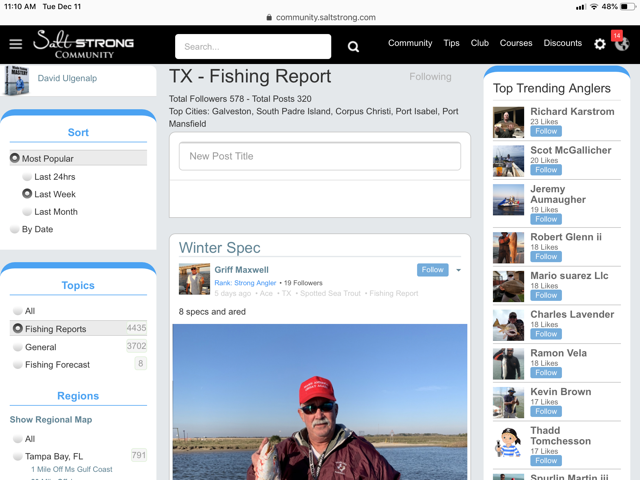
In addition, conduct a Google search by entering the area you plan to fish followed by the words “fishing report” and you will likely find many resources to help with your trip planning.

Wade Fishing Pre-Trip Plan Step 4 – Set Target Species
Determine the species you will be targeting and/or most likely to encounter during your trip based upon your experience and/or review of local fishing reports.
As we constantly hammer in the Salt Strong community, it’s all about TRENDS…
So make sure to reach out to your local network to find out what’s biting in your area (if you don’t have an awesome network of anglers, check out the Salt Strong Community here).
Wade Fishing Pre-Trip Plan Step 5 – Maps
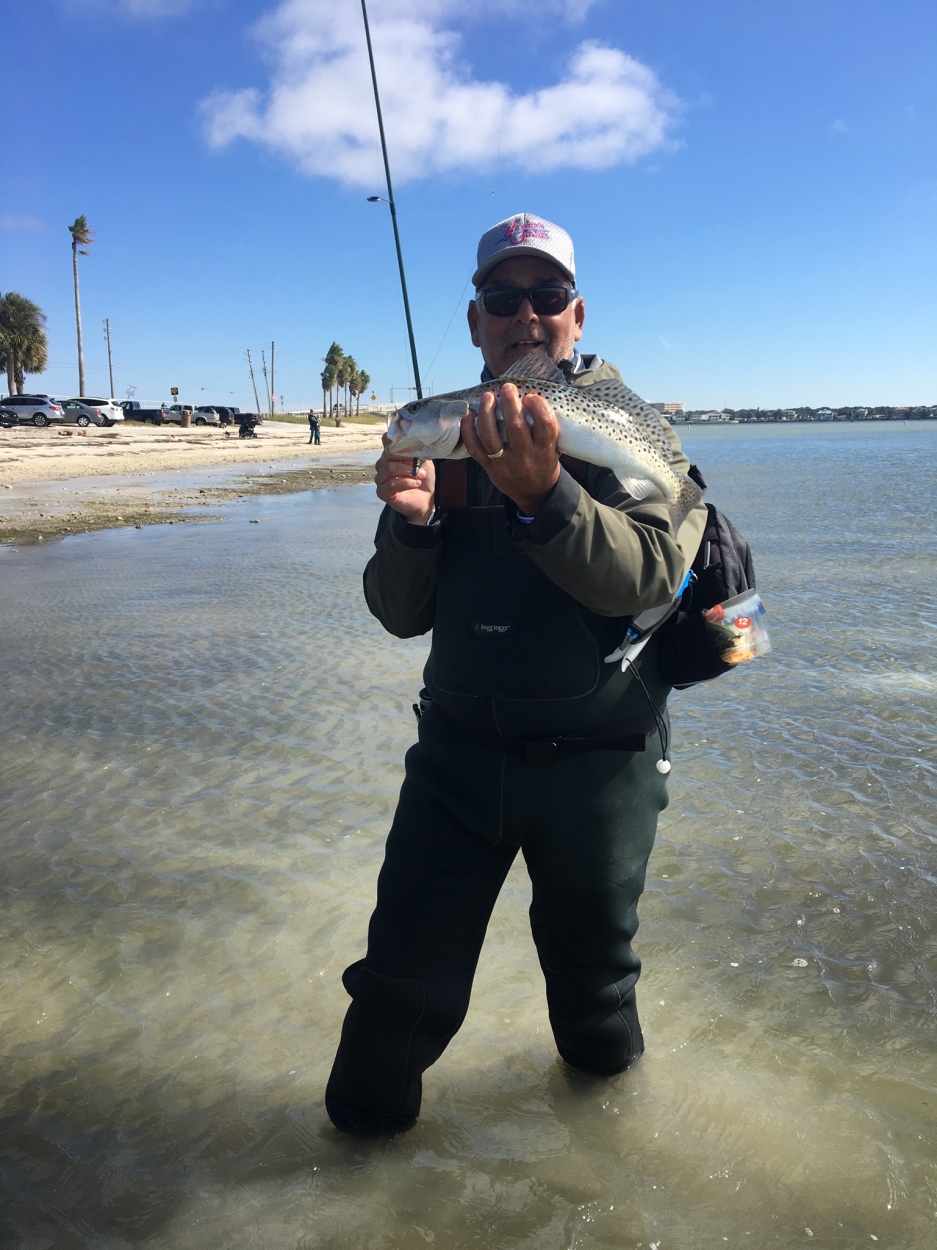
Thoroughly review the area using Google Earth or Bing Maps looking for accessible spots likely to have the structure, depth, and tidal flow to attract bait and/or offer the targeted species a sanctuary like deep water.
Prime candidates include waters adjacent to causeways, bridges, piers and protected shorelines, inlets, beaches, points, and channels.
Search for waterside parks, boat ramps, kayak launches, and nature preserves for areas likely to offer access to wade fishermen.
Wade Fishing Pre-Trip Plan Step 6 – Pick Spots
Identify the spots you found through your Google Earth review that will provide the best opportunities to fish effectively under the expected conditions.
For example:
- Look for spots where the targeted species are likely to be during the season and under the expected conditions you will be fishing. If the season and conditions are likely to have fish roaming shallow flats, look for areas where flats are accessible. If fish are likely to be in or have deep water nearby, look for accessible spots adjacent to deep channels or holes.
- If strong winds are forecast, look for spots that will be protected from the wind or where the wind will be at your back.
- If a cold front is forecast to come through, look for spots that will provide fish sanctuary during fast and extreme changes in temperature and/or barometric pressure.
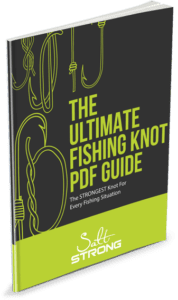 Do You Know The STRONGEST Fishing Knot For Every Situation?
Do You Know The STRONGEST Fishing Knot For Every Situation?
The results of these knot strength tests might surprise you!
Click here to download the FREE “Ultimate Fishing Knot PDF Guide” (only takes a few seconds)
Wade Fishing Pre-Trip Plan Step 7 – Rank Spots
Rank the spots you’ve identified from most to least likely to be productive under the expected conditions during your trip.
This might seem like a step you can skip, but I urge you to do this.
Writing this out and actually ranking your spots will really make you think about each spot (and the trends behind them).
Wade Fishing Pre-Trip Plan Step 8 – Set Start Time & Place
Determine where and at what time you will be starting and ending each day of your trip.
Wade Fishing Pre-Trip Plan Step 9 – Set Itinerary
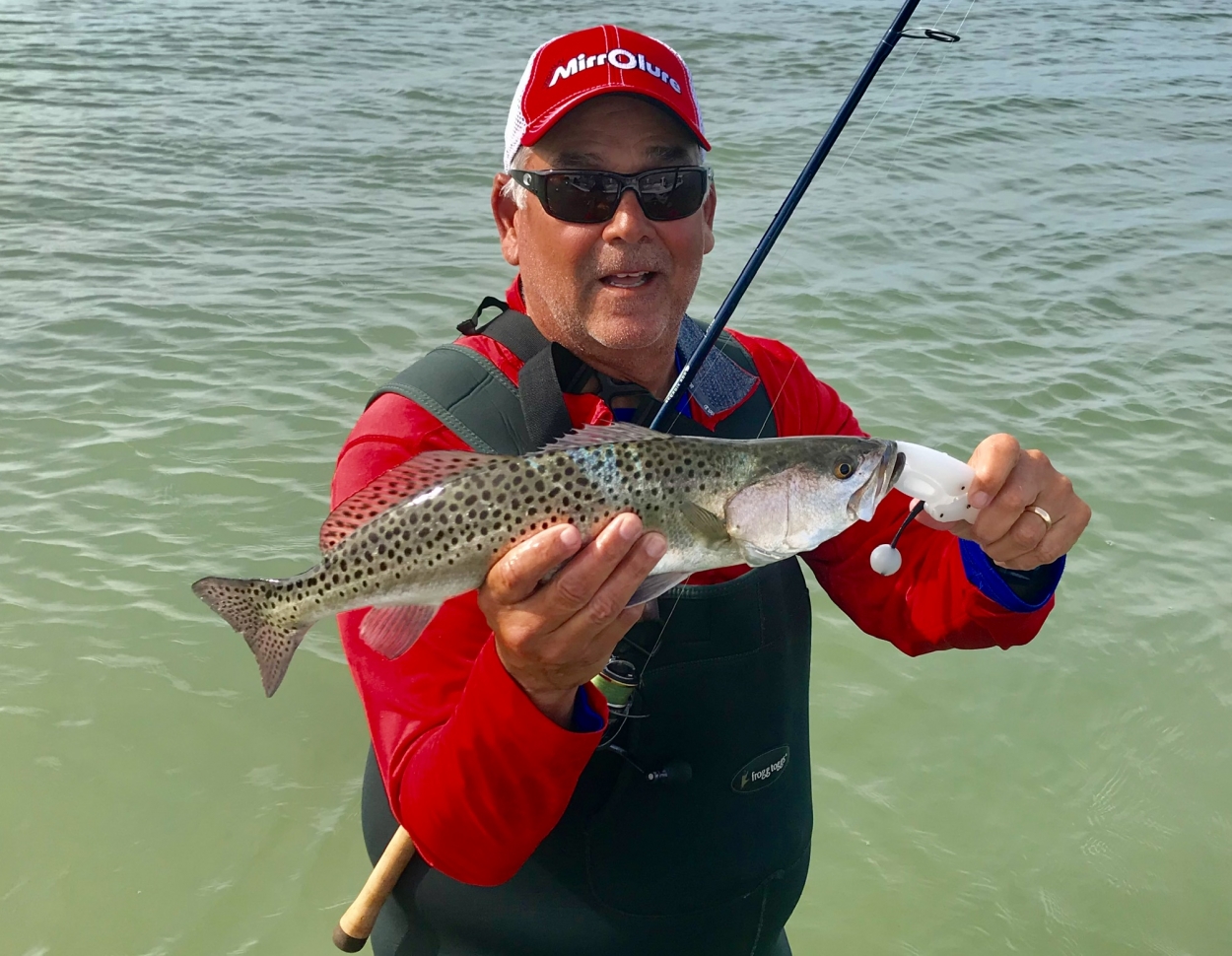
Create an itinerary and route for the day that maximizes your time fishing productive spots based upon one of these strategies.
- Start by fishing the spot closest to where you will begin the day and then the next closest spot after that and the next closest spot after that and so on until you’ve included enough spots to fill the day. I tend to use this strategy on the first day of a trip, especially if it’s the day of arrival, as I probably don’t have a full day to fish and I’m usually anxious to start fishing as soon as possible.
- Start by fishing the spot furthest away from where you will begin the day and then the next closest spot to that one and after that and the next closest spot after that and so on until you’ve included enough spots to fill the day. This is often my strategy for the second day of a trip, when I can get an early start and it’s not likely to include spots I fished on arrival day.
- Start by fishing the spot you’ve ranked as most likely to be productive and then the next most likely and so on until you’ve included enough spots to fill the day. This strategy may not get me to as many spots as the previous two, but it will ensure that I fish the spots I believe are most likely to be productive.
- Regardless of the strategy you choose, you will likely have to make some important decisions as you follow your itinerary from spot to spot and day to day, which will impact how many spots you will be able to fish.
- How long do you fish a spot when you’re not catching fish? If conditions are as you expected and there is fish activity in the area, I like to give a spot an hour before I move on. However, if there’s soft bottom or conditions aren’t as you expected and there’s no activity, I may only fish for 15 minutes or not at all.
- How long do you fish a spot when you are catching fish? I won’t leave a spot when the bite is hot but if it starts to cool down, I’ll move on even if I’m still catching fish. I usually want to check out other spots on my itinerary and can always come back later that day or the next if other spots don’t produce.
- Should you fish a spot not on your itinerary that looks good while on the way to a spot that is on your itinerary? Stop and fish it. You can’t see everything on Google Earth and I’ve found some great spots this way.
- If you find a great spot on the first day of a multi-day trip, do you go back to it or stick to your original itinerary for the second day? The whole purpose of doing your research and creating an itinerary is to identify great fishing spots, so if you find one, go back and adjust your itinerary to make time for it.
- Should you make a point to fish every spot on your itinerary? No! The only way you are likely to do so is if you don’t have many spots to begin with or every spot is a bust.
Wade Fishing Pre-Trip Plan Step 10 – Log Details
Keep a log listing each spot, conditions, arrival and departure times, the number of fish caught by species, lures, type of retrieve and any other significant information that may have impacted the bite.
Save the log for reference on your next trip to the area and helping you understand other areas, including your home waters.
Below are the itineraries for each day of my trip.
I create these on my iPad by taking a screenshot of the Google Earth image of the area I plan to fish, save it to my photos, then enter edit mode to mark it up to show the spots I plan to fish and in what order.
I also include expected wind direction and speed.
After each day I review my original itinerary and mark it up to show where I fished and in what order.
I keep these along with the log for each day to use the next time I fish the area or as a reference if I’m fishing in other areas with similar conditions.



On my recent trip, my son and I arrived at Corpus Christ International airport at 9 am on a Friday morning and were in our waders fishing our first spot by 10 am.
We were back to our car packing up by 1 pm Sunday.
Prior to the trip, I followed each of the steps listed above and ended up with an itinerary that included seven spots on day one, six spots on day two and three spots on day three.
Our first planned stop of the trip was difficult to access so we skipped it. However, we noticed a fishy area directly across from that area with easy access and decided to give it a try.
We ended up on a hot trout, redfish and flounder bite that lasted two hours.
We left a hot bite for our next spot which turned out to have a soft bottom, muddy water, and no activity so we left after fifteen minutes.
Our third spot put us on a huge school of big winter trout that kept us busy for another couple of hours before it finally slowed down. Those three spots wore us out and we called it a day – a very successful one at that!

The weather forecast had called for a cold front to come through over-night, but we woke up to calm and foggy conditions on day two.
That allowed us to fish a spot we had scheduled for day three that brought us a steady bite and the biggest trout and redfish of the trip.
However, the bite shut down abruptly as the cold front finally came through at mid-morning.
We ended up fishing three spots on our original itinerary for the day as northwest winds blew in with the front.
Two of these spots produced grand slams on slow to steady action and the third was a strikeout.
Another good day, especially considering the conditions.
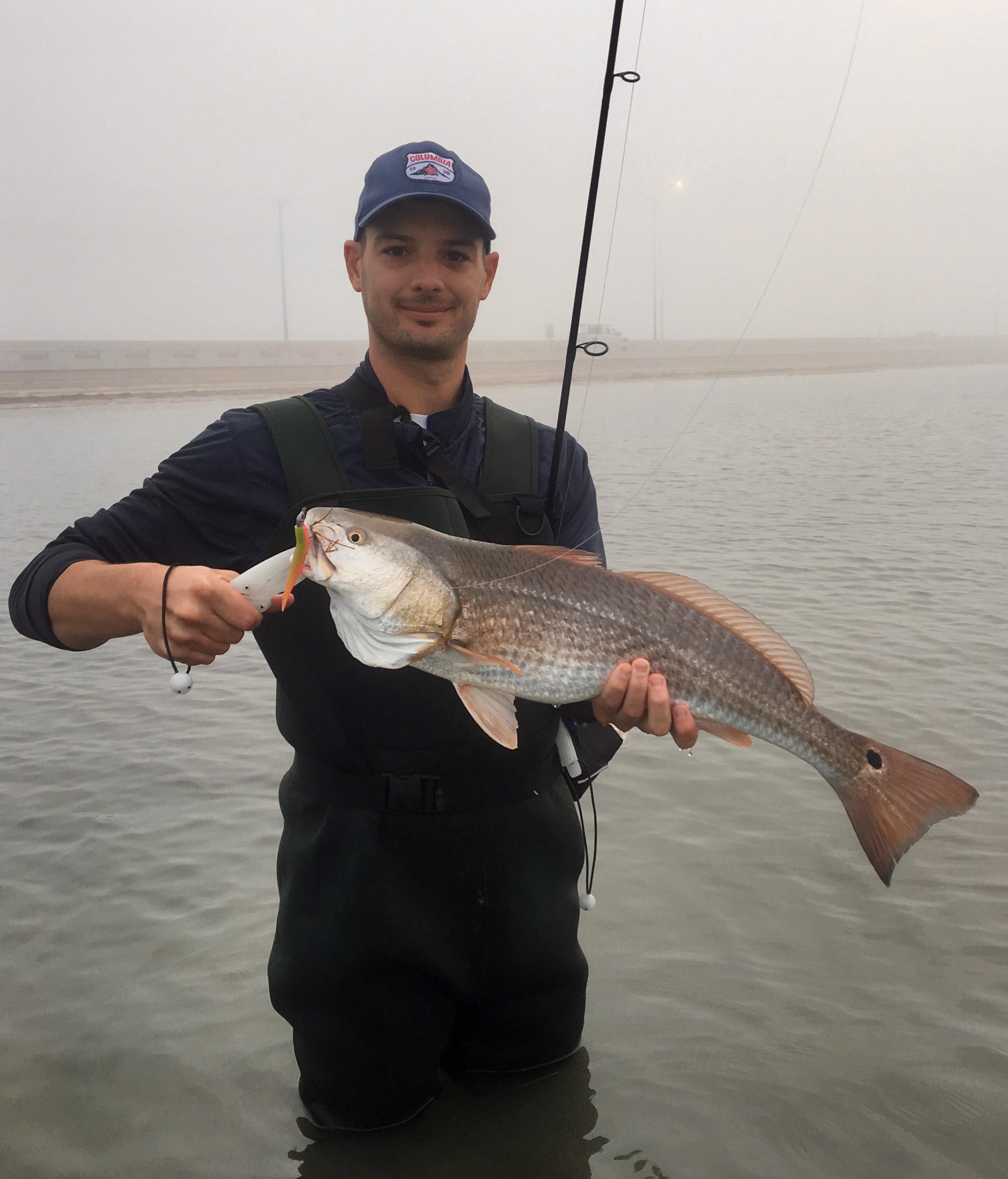
Day three had us fishing post front, with clear skies, cooler temperatures and northeast winds at 10 to 15 mph, which is what we had expected and planned for.
So, we fished the three spots on our itinerary and ended up with steady action and grand slams at all three. A great way to finish our trip.
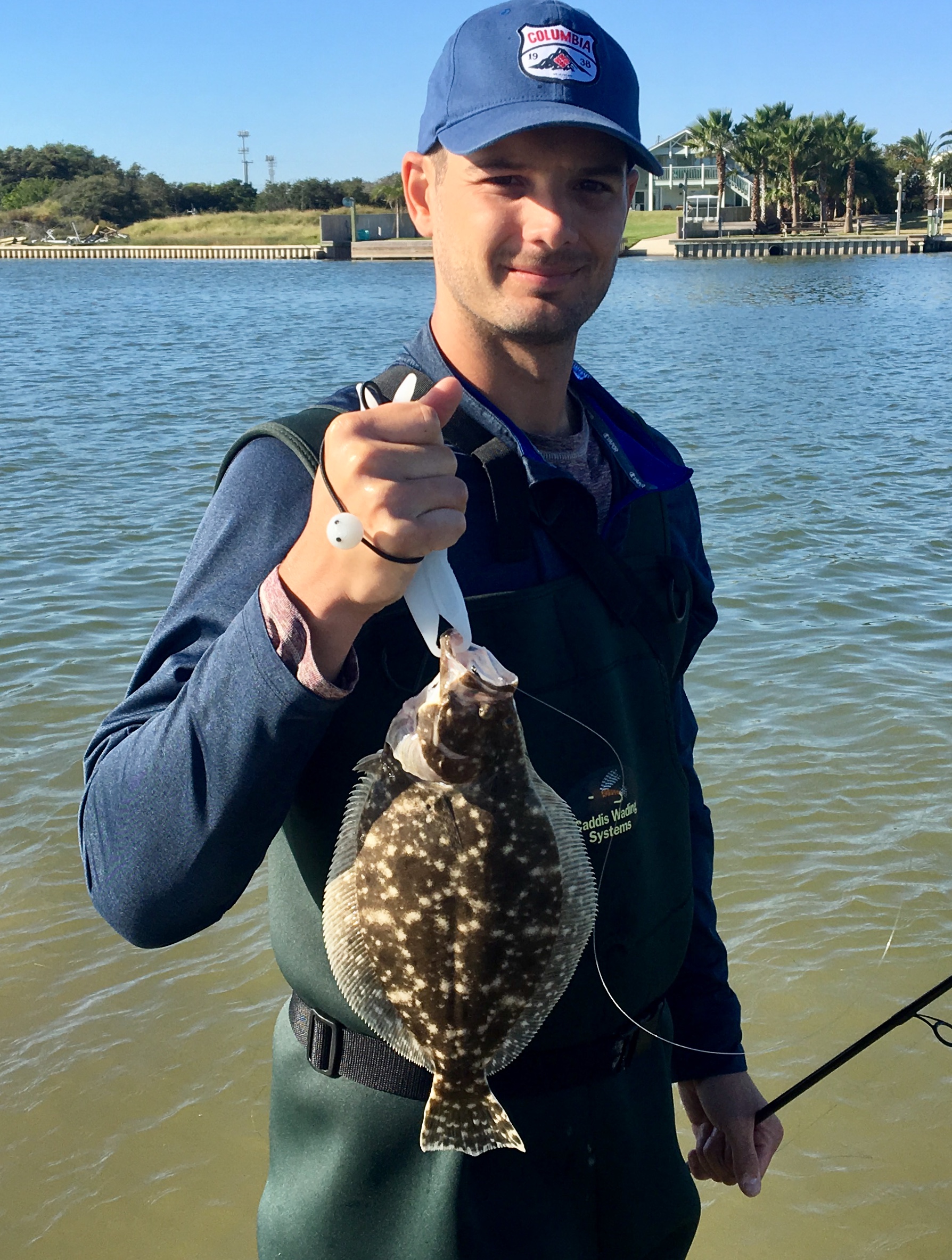
Not every trip will be as successful as our trip to Corpus Christi, but once again, I guarantee if you follow these steps and use these tools, your chances of catching fish in new areas as well as those you frequently fish, will improve dramatically.
Tight lines!
Wader Dave
Check out my Wade Fishing Mastery Course here.
 Do You Know The STRONGEST Fishing Knot For Every Situation?
Do You Know The STRONGEST Fishing Knot For Every Situation?
The results of these knot strength tests might surprise you!
Click here to download the FREE “Ultimate Fishing Knot PDF Guide” (only takes a few seconds)
Related Posts:
1. Wade Fishing 101: How To Maximize Your Strikes While Wade Fishing (see it here now)
2. Wade Fishing Tips For Redfish & Trout (Interview) – (see it here now)
3. Goofy Jigs: Are These The Best Lures Ever Made For Pompano (see it here now)
P.S. – If you think your angler friends would like to see this, please Tag them or Share this with them. You Rock! Pa-POW!
P.P.S. – If you have any other wade fishing tips or questions about this post, please leave me a comment below.
Related categories:
STOP WASTING TIME ON THE WATER!
Do what the “SMART ANGLERS” are doing and join the Insider Club.
Here’s what you’ll receive today when you join:
- Weekly fishing reports and TRENDS revealing exactly where you should fish every trip
- Weekly “spot dissection” videos that walk you through all the best spots in your area
- Exclusive fishing tips from the PROS you can’t find anywhere else
- Everything you need to start catching fish more consistently (regardless if you fish out of a boat, kayak, or land).









Hi there to all, for the reason that I am genuinely keen of reading this website’s post to be updated on a regular basis. It carries pleasant stuff.
gökkuşağı koleji
https://t.co/1EtMR4Ba4k ile Postegro Lili Web Giri� yapabilirsiniz.
There is definately a lot to find out about this subject. I like all the points you made
This is my first time pay a quick visit at here and i am really happy to read everthing at one place
How extraordinary, far out.
Hope it helps out you on fish during your next fishing trip.
This is some awesome info definitely going to start doing when planning my trips!!! Awesome job Wader Dave!!!
I appreciate the positive feedback and hope it helps you catch fish on your next trip.
Thank you Wader Dave!
You covered most of my fishing areas (I extend up into St. Charles Bay as well). Kayak and wade fishing.
Thank you for the great break down of your processes! I will try to incorporate some of them into my pre-plan processes.
I need to improve my real-time spot/location decisions as I am fishing. I either give up on a spot too soon or stick to a spot for too long. Time in the water will improve that, I hope!
Glad to have you back in Texas, even if it was a short trip! You and your son made the best of the time you had!
***just saw the time stamp on the comments below VS the date of the above posting. I was momentarily befuddled. I realized that you incorporated some of a previous posting that included the comments below. 🙂
Neal – this was originally posted 3 years ago. I was surprised to see it reposted but the strategy hasn’t changed. Hope it helps to put you on more fish.
Excellent article. I’ve been wade fishing in the surf for years, with nice results. It allows me to reach out to and beyond the second sand bar. You do have to be really careful not to get swamped and have your waders fill up — very dangerous. For that reason, I only do it in the right conditions. But I love the peacefulness of being out there alone surrounded by water. When you hook one, it’s quite and tranquil.
I’m a south east Texas fisherman. I love fishing… bank or boat, as much as I possibly can with family, and friends. This was an AMAZING read. I loved the whole thing, very informative, and I will use the tips! I do have one question… one that I’ve always wondered. Maybe I’m just a dummy… but I really don’t see the point of “wade fishing”. Why do people wade fish? Is it just for fun? I know this older gentleman… who religiously wade fishes. He is very old… and can’t cast all that far. He’s doing great for his age no doubt, but it had me thinking. I can cast further than he can… standing on the bank. Yes, I realize it’s not about how far you can cast, I’m just saying. He can only carry a little bit of gear, and watching him change lures, getting them out of his backpack, while holding it above the water.. just looks painful. And watching sharks swim around him and his floating bait bucket gives me the creeps. When ever the old guy is out there… I seem to be catching the same fish, similar sizes, and similar amount of hook ups. But I have multiple poles setup, so I’m catching more fish. So why would I wade fish? Why get in the water at all? I’ve got all the equipment I need on the bank, and I can bring my whole tackle box, all my gear, and as many poles as I want. I can throw a few hi-low rigs with shrimp/finger mullet and just let them sit until I get a bite, also one pole with a pop a cork, and another pole working a jig… all at the same time. If I go with a few family members… there are fishing poles every where. So what are the advantages of wade fishing? If you walked out there really really far…. ok… I cant cast that far. But most of my hookups are in shallow water, so going deep isn’t really a good thing. Most people wade fishing… aren’t that far from the bank anyway. Why do they do it??
Many if not most people wade fish because they don’t have a boat, kayak or paddle board and are therefore limited to fishing spots they can access from shore. Getting in the water versus staying on the bank expands your range and often allows you to fish channel edges and other structure you can’t reach casting from shore. Wading is a much stealthier method of fishing as there’s no boat noise, shadows cast into the water or water displacement that might scare or alert fish to nearby predators (which fishermen are). Wade fishing a mangrove shoreline allows me to work it much more thoroughly and effectively than I can from a boat or kayak which usually results in more fish. I also believe less gear and fewer lures to choose from is an advantage. Keeping it simple and limiting your lure selection to a few confidence baits has you fishing more and changing lures less – I’m all about keeping it simple. If you haven’t wade fished, you’ve missed the sense of accomplishment and special feeling of stalking, hooking and catching fish in their own environment – I’d rather catch one fish wading than 10 from a boat.
Wow. I’m impressed. I’ll give it a try! No doubt it looks fun… I just wasn’t sure why it’s so popular. Now I know. Stealth, stocking your prey, less is more, and accessibility. Got it. Thank you for the incredible and thorough post!